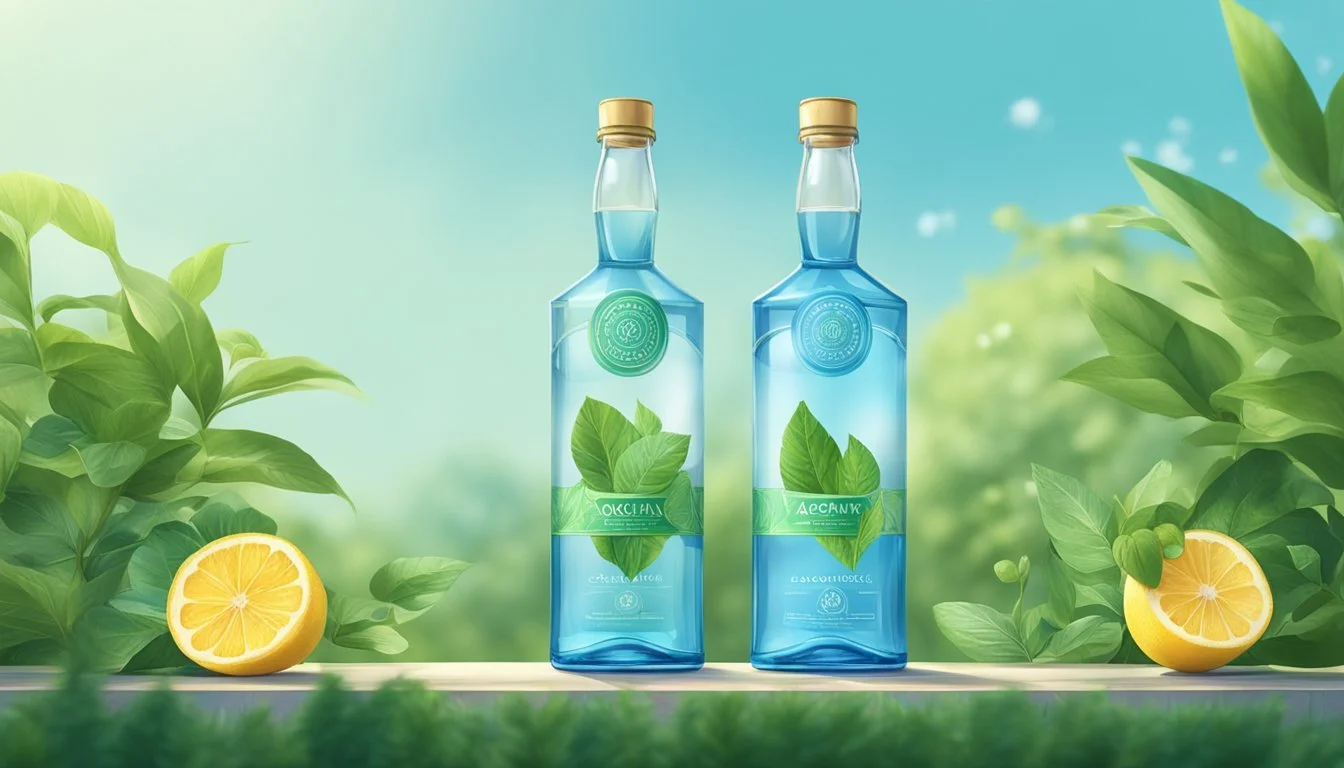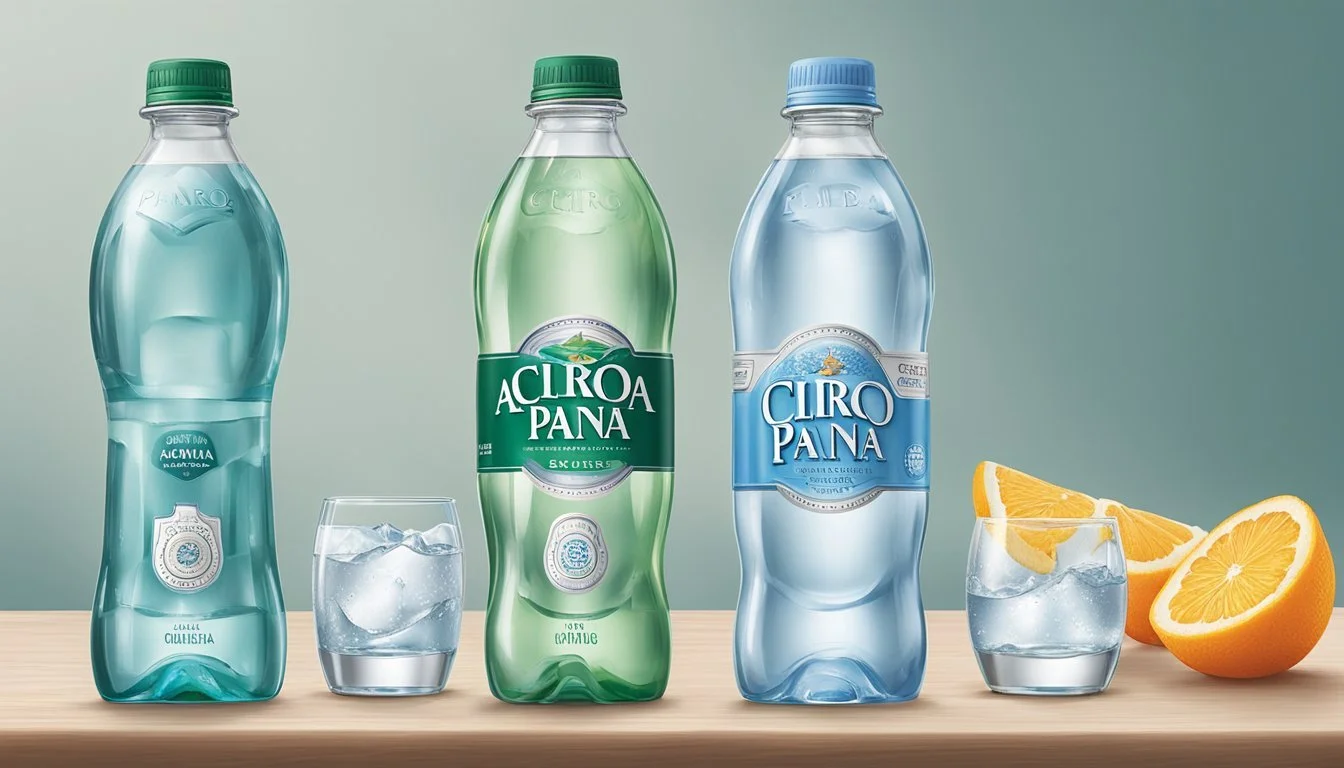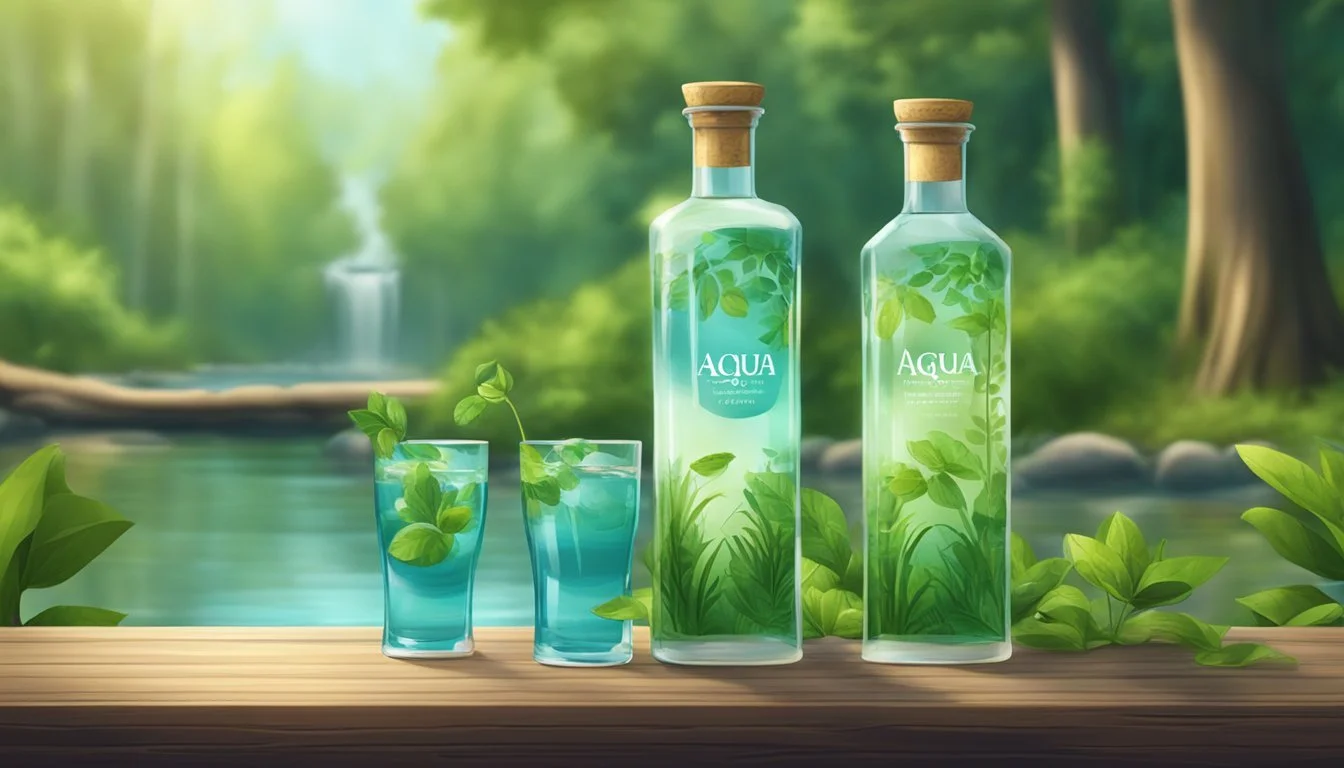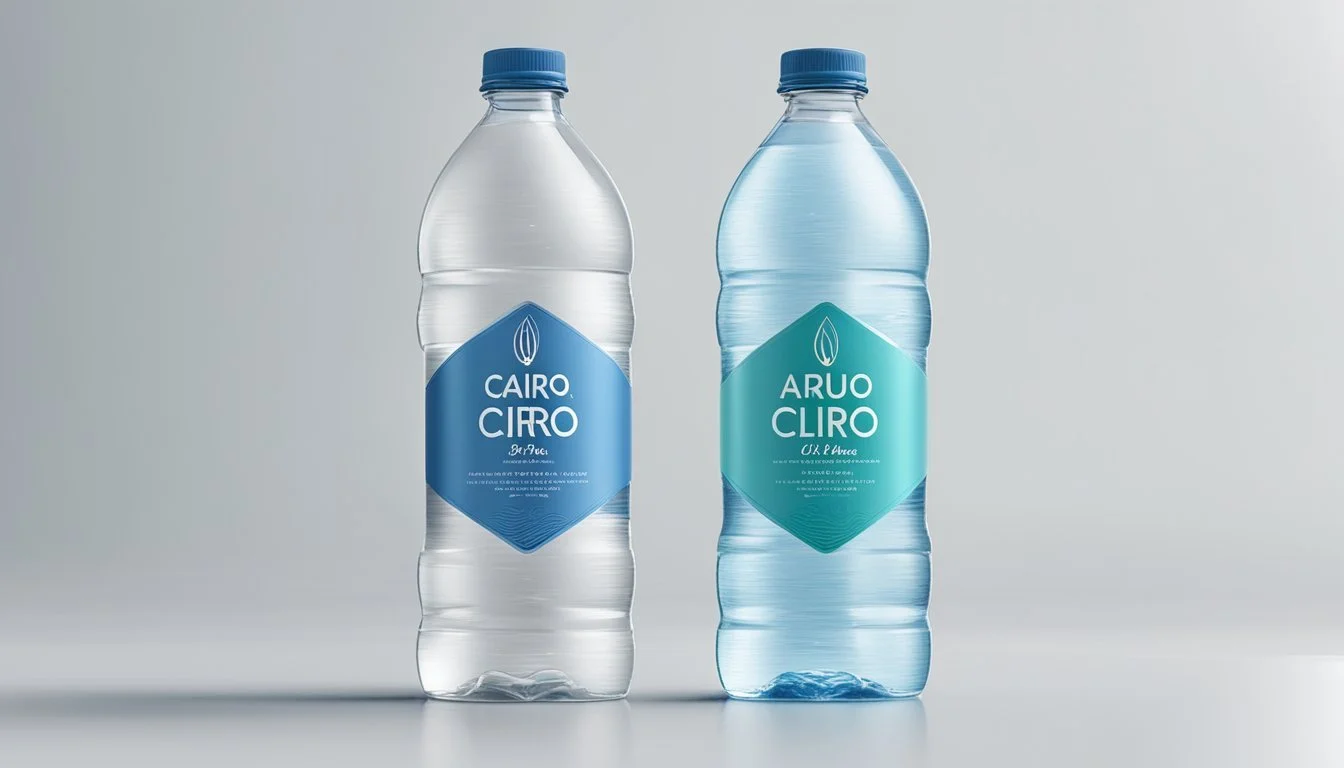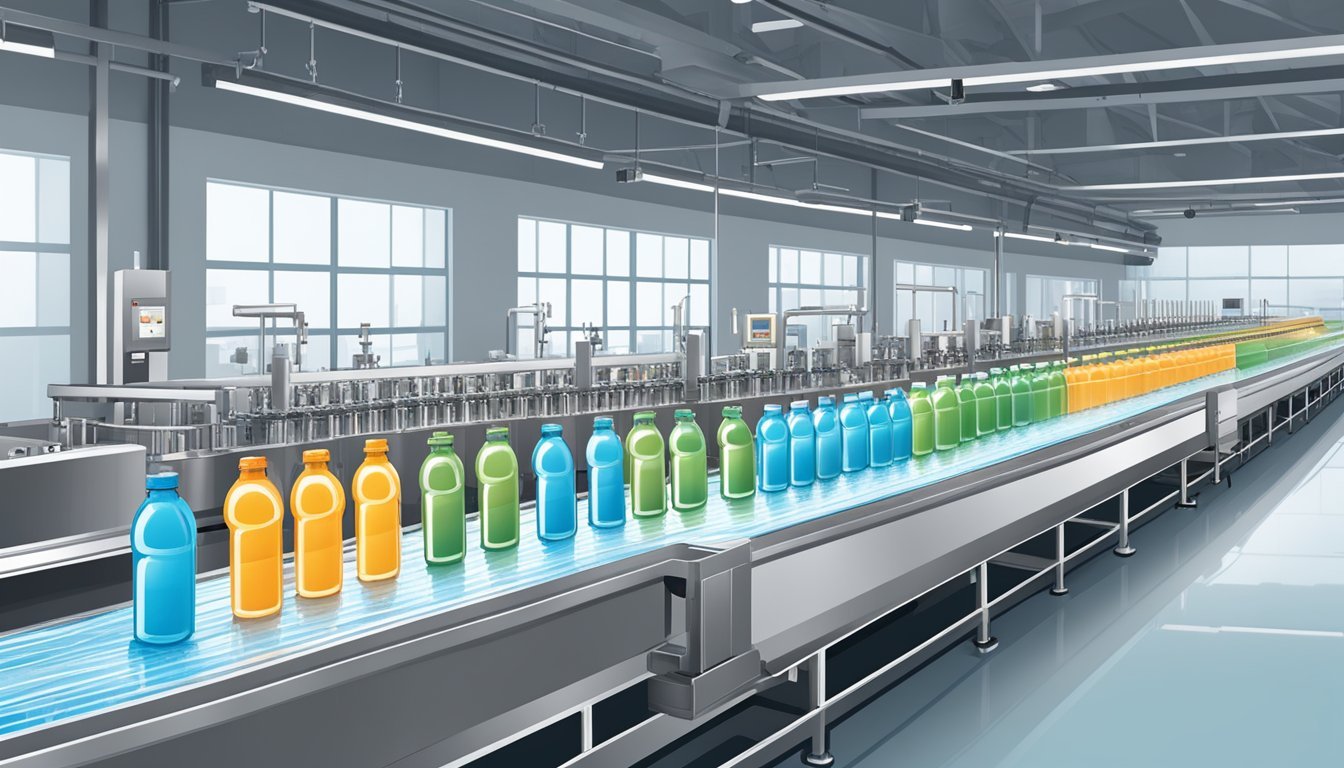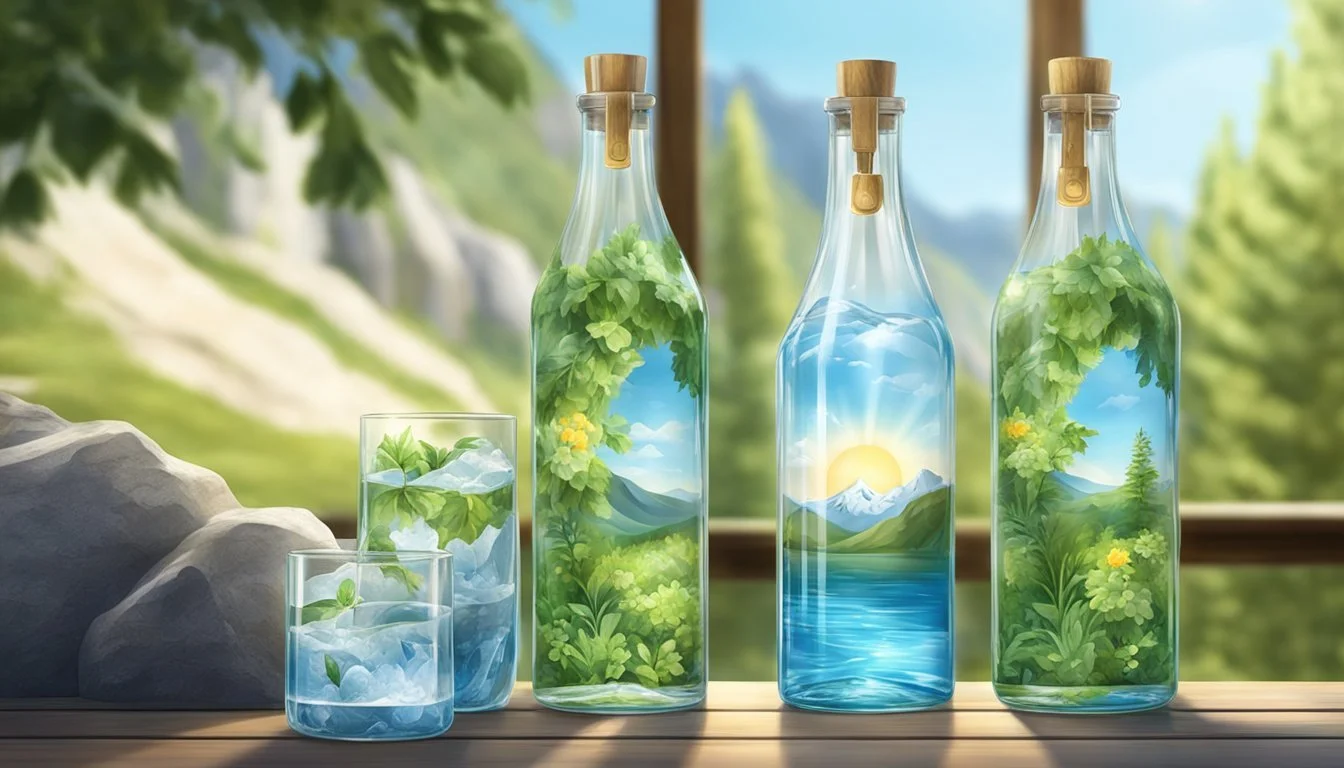Acqua Pana vs. Cirro
Comparative Analysis of Premium Bottled Waters
Choosing the perfect bottled water can be challenging, especially when comparing two popular brands like Acqua Panna and Cirro. Acqua Panna, renowned for its premium quality, originates from the Tuscany region of Italy and offers a smooth, balanced taste appreciated by many in fine dining establishments. Cirro, on the other hand, is celebrated for its refreshing purity and consistently crisp flavor, making it an excellent hydration choice for daily consumption.
For those seeking a refined and subtly nuanced water, Acqua Panna stands out with its delicate flavor and soft mouthfeel. Bottled at the source in the Apennine Mountains, it naturally complements gourmet meals and sophisticated palates. Meanwhile, Cirro appeals to those who prefer a straightforward, clean taste with no aftertaste, providing a reliable and satisfying hydration experience.
Both brands bring unique qualities to the table, but the decision ultimately relies on your specific preferences. Whether you lean towards the elegance of Acqua Panna or the refreshing simplicity of Cirro, exploring the distinctions between these two bottled waters will enhance your appreciation for quality hydration.
The Significance of Water Source
The source of bottled water plays a critical role in determining its quality, taste, and mineral content. Acqua Panna and Cirro draw their water from distinct sources, which significantly influence their characteristics.
Natural Springs and Their Geographical Origins
Acqua Panna originates from a natural spring in Tuscany, an area renowned for its rich history and pristine environment.
The water is sourced from the Mugello region of the Tuscan Apennines. This location provides Acqua Panna with a unique mineral composition, including calcium and magnesium, contributing to its smooth taste.
A notable feature of the Tuscan Apennines is the volcanic rock through which the water filters. This geological aspect enhances purity, making Acqua Panna microbiologically safe.
Cirro, on the other hand, is sourced from pristine springs in the Ouachita Mountains of Texas. This region is known for its ancient geological formations, providing mineral-rich water.
The Ouachita Mountains’ natural filtration process through bedrock leads to a fresh and clean taste, distinct from other sources.
Groundwater and Aquifers
Groundwater, stored in aquifers, serves as the primary source for Cirro. These underground layers of water-bearing permeable rock offer a consistent and reliable supply.
Cirro's groundwater is naturally filtered through various strata, including sand and gravel, which helps in removing impurities and adding essential minerals.
Acqua Panna also benefits from groundwater that accumulates in natural reservoirs. The water travels through earth and rock layers, absorbing minerals like calcium and magnesium.
Such natural filtration processes enhance the water's quality and safety, ensuring it remains free from contaminants.
Taste Profile and Mineral Content
Taste and mineral composition play crucial roles in determining preferences for bottled water. Each aspect contributes uniquely to the overall experience.
Understanding Taste Nuances in Water
Taste in bottled water can vary based on several factors, including the source and processing methods. Acqua Panna, sourced from Tuscany, is renowned for its smooth, soft mouthfeel that's often described as sophisticated. This quality makes it a popular choice for refined palates.
Cirro, although less well-known, emphasizes purity. Its filtration process aims to produce a neutral taste, appealing to those who prefer a clean, uncomplicated water taste. These subtle taste differences highlight personal preferences between smooth and neutral flavors.
Influence of Minerals on Flavor
Mineral content significantly influences water flavor. Acqua Panna contains essential minerals like calcium, magnesium, and potassium, which contribute to its mild taste and slight sweetness. This mineral composition not only enhances taste but also provides health benefits.
On the other hand, Cirro's filtration process removes many minerals, resulting in a more neutral taste. While it lacks the rich mineral profile of Acqua Panna, it attracts those seeking a straightforward, crisp water experience. Mineral balance and composition are key elements determining each water's unique taste characteristics.
Essential minerals like calcium and magnesium enhance flavor subtly without overpowering. Understanding these elements helps consumers select bottled water that aligns with their taste preferences and health goals.
Health and Hydration
When choosing bottled water, it's important to consider factors that impact hydration and overall wellness. Key areas to focus on include the electrolytes present in the water and the pH level, as these can greatly influence your hydration and health.
The Role of Electrolytes in Hydration
Electrolytes like sodium, potassium, and magnesium are essential for maintaining fluid balance in the body. Acqua Panna offers a balanced mineral content, making it a good option for replenishing electrolytes lost during physical activities.
Cirro, on the other hand, also contains key electrolytes but has a slightly different mineral profile that may appeal to some consumers based on taste and hydration needs.
Electrolyte Benefits:
Sodium: Helps with fluid retention and balance.
Potassium: Regulates muscle function and heart rhythm.
Magnesium: Supports muscle function and reduces cramps.
Each brand’s specific electrolyte composition can make a noticeable difference in how well it hydrates your body during various activities.
PH Level and Its Impact on Wellness
The pH level of water is another critical factor impacting health. Acqua Panna has a pH level around 8.0, categorizing it as slightly alkaline. Alkaline water is often praised for its potential to neutralize acid in the bloodstream and improve overall hydration efficiency.
Cirro maintains a pH level closer to neutral, generally around 7.0, which is ideal for everyday consumption.
Alkaline Benefits: May help neutralize acid and support digestion.
Neutral pH: Best for general health, maintaining a balanced dietary pH.
Consumers seeking specific health benefits or those with dietary restrictions might find the slight differences in pH levels between Acqua Panna and Cirro to be a deciding factor.
Types of Bottled Water
There are various types of bottled water available today, each with unique characteristics. This section will focus on the differences between sparkling and still water, and the distinctions between spring, mineral, and purified water.
Comparing Sparkling and Still Water Varieties
Sparkling Water: Often referred to as carbonated or effervescent water, sparkling water contains dissolved carbon dioxide gas. This provides the water with its characteristic bubbles and fizzy sensation. Brands like Perrier and San Pellegrino are well-known for their sparkling water options. Sparkling water can come in both natural and flavored varieties, with some containing naturally occurring carbonation from mineral springs.
Still Water: Still water, also known as flat water, lacks the carbonation found in its sparkling counterpart. It includes a range from tap water to bottled still spring and mineral waters. Brands like Acqua Panna and Fiji Water are popular still water choices. Still water is often preferred by those who enjoy pure, clear refreshment without the effervescence.
Differences Between Spring, Mineral, and Purified Water
Spring Water: Spring water originates from underground sources and flows naturally to the surface. It must be collected at the spring or through a borehole tapping the underground source. Natural spring water, like Poland Spring and Evian, is prized for its natural taste and mineral content which varies based on the geography of the spring.
Mineral Water: Mineral water is sourced from mineral springs containing various minerals such as calcium, magnesium, and potassium. These minerals are naturally occurring and must be present in the water at consistent levels specified by regulation. Examples include Voss and Mountain Valley Spring Water, which offer distinct tastes influenced by their mineral richness.
Purified Water: Purified water undergoes a rigorous purification process, removing impurities and contaminants. This can be achieved through distillation, deionization, or reverse osmosis. Brands like Aquafina and Dasani provide purified water options. These waters are often free of most minerals, resulting in a clean and consistent taste.
Bottling and Packaging Processes
The bottling and packaging processes of Acqua Panna and Cirro involve advanced techniques to ensure the quality and sustainability of their products. They emphasize environmental impact and strive for eco-friendly packaging solutions.
The Bottling Journey from Source to Store
Acqua Panna begins its journey in the Tuscan hills, where the spring water is naturally filtered through limestone before being bottled. This process ensures a smooth and pure taste. The water is then transported to bottling facilities, where it undergoes rigorous quality checks.
Cirro sources its water from protected springs, and like Acqua Panna, it adheres to strict quality protocols. The water is bottled close to the source to maintain freshness. Stainless steel tanks are used to transport the water to ensure taste integrity. Both brands package their water in recyclable glass bottles, which helps maintain the quality and reduce environmental impact.
Innovations in Eco-Friendly Packaging
Acqua Panna and Cirro are committed to minimizing their environmental footprint. Acqua Panna has introduced bottles made from 100% recycled plastic, reducing waste and fostering a circular economy.
Cirro focuses on sustainable materials, using recyclable glass and exploring alternatives like boxed water. They aim to reduce their carbon footprint by optimizing their packaging processes, using less plastic, and exploring lighter materials to reduce transportation emissions.
These efforts ensure that they not only provide high-quality water but also contribute positively to environmental sustainability. By integrating eco-friendly practices into their bottling and packaging processes, both brands strive to meet the growing consumer demand for sustainable products.
The World of Water Brands
In the diverse landscape of bottled water, both premium and corporate brands vie for attention. Key players include high-end names and large corporations, each offering unique characteristics.
Navigating Premium Water Brands
Premium brands such as Acqua Panna, Fiji Water, Voss, and Evian are distinguished by their sources and their packaging.
Acqua Panna is sourced from the springs in Tuscany and boasts a balanced, neutral pH level around 8.0. This can be beneficial for maintaining dietary pH balance.
Fiji Water, renowned for its artesian source, offers a silky smooth taste and a pH of around 7.7. Its iconic square bottle design also sets it apart.
Voss is often marketed for its pristine source in Norway and comes in distinctive glass bottles, making it a favorite among high-end consumers. It is known for its crisp and clean taste without any aftertastes.
Evian water comes from the French Alps and is marketed as a mineral-rich option. Its naturally occurring electrolytes contribute to its slightly higher pH level of around 7.2, promoting hydration and taste.
Comparing Major Corporate Brands
Corporate giants like Coca-Cola and Pepsico dominate the bottled water market with brands such as Dasani and Aquafina respectively. These brands appeal to different segments through mass production and wide availability.
Dasani, produced by Coca-Cola, goes through a multi-step purification process and is enhanced with minerals for taste. This makes it widely accessible and often a staple in many households.
Aquafina, from Pepsico, similarly undergoes rigorous purification. Known for its affordability and availability, it is a popular choice for many consumers.
Nestlé, the largest bottled water corporation globally, owns Pure Life among other brands. While Pure Life is accessible and affordable, it has received mixed reviews regarding its taste and origin.
Other notable mentions include Gatorade’s Propel water which targets sports enthusiasts with added electrolytes for enhanced performance and rehydration.
These entities shape consumer choices in the vast world of bottled water through their distinct approaches to marketing, quality, and target demographics.
Environmental and Sustainability Concerns
Choosing between Acqua Panna and Cirro involves considering their environmental and sustainability impacts. This covers aspects like the use of natural springs, the effects of water extraction, and the broader environmental footprint.
The Impact of Bottled Water on the Environment
The production and disposal of plastic bottles are major concerns. Acqua Panna uses plastic bottles, which contribute to pollution and microplastic contamination. Glass bottles, while better in some ways, still have significant carbon footprints due to manufacturing and transport. Both Acqua Panna and Cirro need to consider these factors.
Sustainability initiatives are becoming crucial. Some bottled water brands are adopting recycled materials and reducing plastic content. Consumers can look for certifications or eco-labels indicating a company's commitment to sustainable practices. The key is minimizing waste and reducing carbon emissions.
Water Extraction and Its Long-Term Effects
Using natural springs for bottled water needs to balance between demand and preserving the ecosystem. Clean drinking water from natural springs is appealing, but over-extraction can deplete these sources, harming local communities and environments.
Acqua Panna sources its water from Tuscany, Italy. Responsible management is crucial to prevent long-term negative impacts. Measures include monitoring water table levels and regulating extraction rates.
Cirro, with its own water sources, must follow similar guidelines. This ensures that the natural environment and communities relying on these water sources are not adversely affected. Both companies must adopt sustainable water extraction practices to maintain a positive environmental impact.
Culinary Applications
Acqua Panna and Cirro have become staples in high-end dining establishments, both serving unique roles that elevate the culinary experience. These brands are renowned for their distinct qualities that make them well-suited for specific culinary applications.
Water as an Integral Part of Fine Dining
Acqua Panna is often favored for its smooth texture and balanced mineral composition, making it an excellent choice for pairing with light dishes and delicate flavors. Its low mineral content ensures that it does not overpower the palate, allowing the nuances of refined dishes to shine through. This non-sparkling water is frequently used in Michelin-starred restaurants as a palate cleanser between courses.
Cirro water, being a sparkling variety, offers a complementary effervescence to richer, heavier dishes. The carbonated bubbles help to refresh the palate, enhancing the dining experience. This quality makes Cirro an ideal match for dishes with rich sauces or fatty textures, as the carbonation can cut through the richness and leave the tongue ready for the next bite.
Both Acqua Panna and Cirro play pivotal roles in fine dining, each catering to different aspects of a meal's texture and taste profile. Restaurants often choose these brands to ensure their dishes are paired with water that enhances rather than detracts from the overall experience.
Consumer Insights
Consumers often choose bottled water based on taste, hydration, and health benefits.
Acqua Panna is known for its smooth taste and neutral pH level, making it a favorite among those who prefer still water. This Italian spring water is often praised for its light, refreshing quality, enhanced when served at 10-12°C (50-54°F).
Cirro offers a crisp, clean taste that some consumers find more refreshing. The brand's focus on purity appeals to those who prioritize hydration from natural sources.
Taste Preference:
Smoothness: Acqua Panna
Crispness: Cirro
pH Level:
Acqua Panna: Neutral
Cirro: Neutral, depending on the specific source
Both brands emphasize natural filtration processes, but consumer preferences can vary greatly based on individual tastes. Some might prefer the subtle mineral notes in Acqua Panna, while others lean towards the more vibrant profile of Cirro.
Key Factors Influencing Purchase Decisions:
Taste
Hydration efficiency
Mineral content
Personal preferences, health considerations, and even marketing play a role in which brand a consumer may favor.

